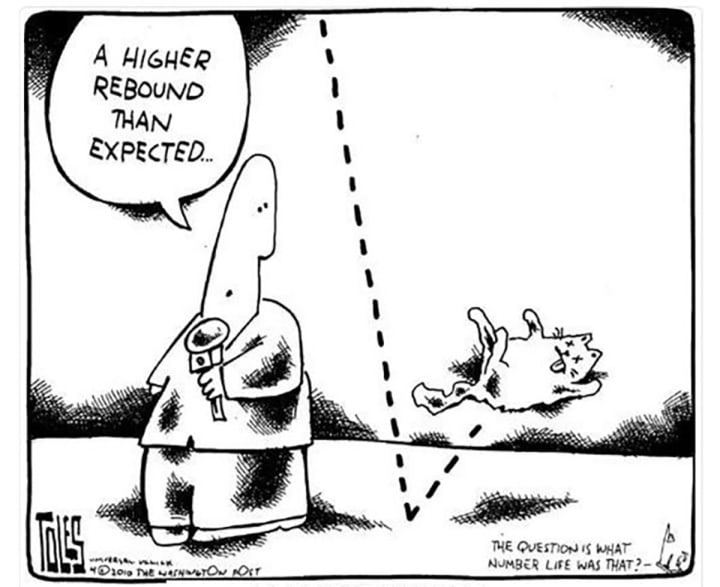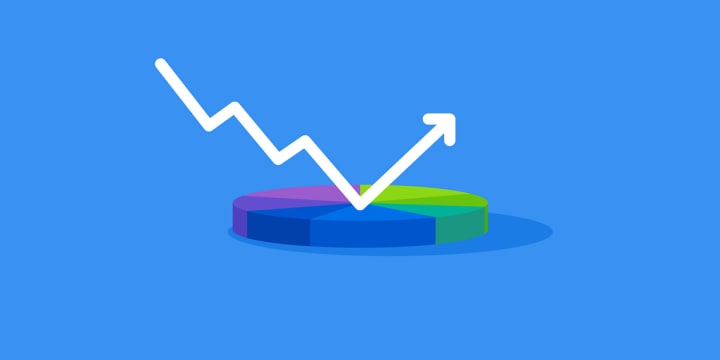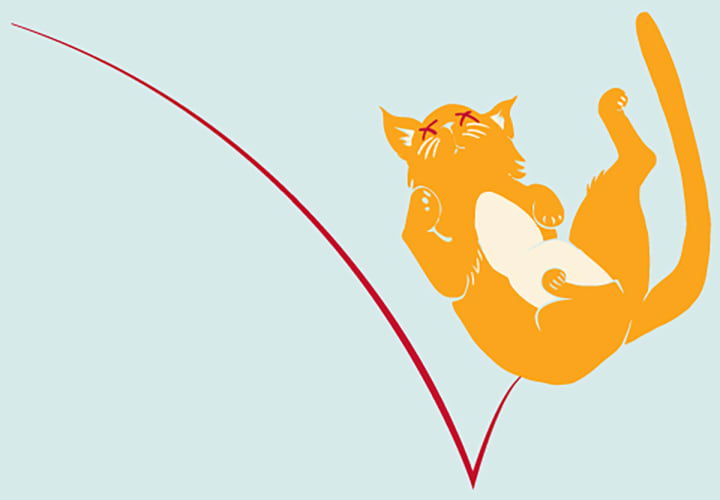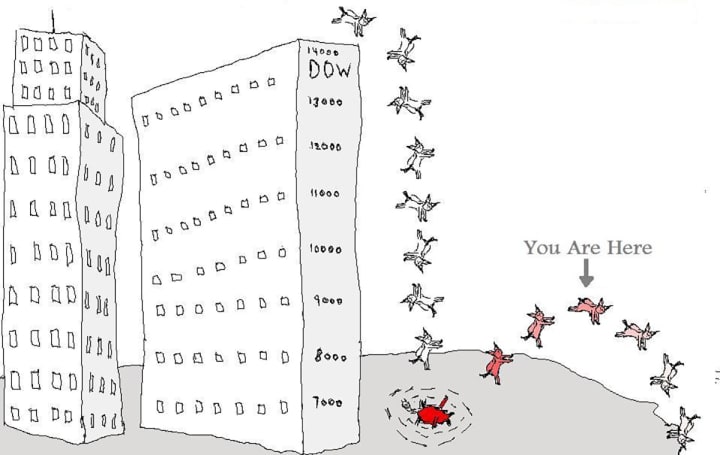What Is A "Dead Cat Bounce"?
Even a dead cat will bounce if it falls fast enough, hard enough, and long enough.
A "dead cat bounce" is what happens when a stock value that has been plunging downward suddenly recovers slightly, only to begin falling again. Investor and author Thomas Bulkowski classifies the brief recovery as a dead cat bounce if the stock declined at least 15 percent in one day. People rarely think of dead cats when they think of the Dow Jones or the NASDAQ, but it’s a figure of speech that even a dead cat will bounce if it falls fast enough, hard enough, and long enough.
The term is believed to have been coined in 1985 when Financial Times journalists were reporting on a brief recovery in the tanking Malaysian and Singaporean markets. They quoted a stock broker saying the brief recovery was what brokers call a "dead cat bounce." A more accurate mental image would be of the dead cat falling down a mountain, since a slight upward bounce is followed by more falling. Welcome to the world of finance trading, where dead cats bounce all the time.
How Does a Dead Cat Bounce Happen?

There are a variety of factors that can make a dead cat bounce, since the market is volatile and highly unpredictable. It is common for downward trends in a particular stock to temporarily recover if something happens in the market to cause that slight boost. Often times, this happens when investors close out their short position and make a slight profit off of them. Other times, the dead cat bounces when buyers purchase shares on the gamble that the shares have already bottomed out.
Because the market is so unpredictable, it’s very difficult to tell if the dead cat has bounced or not. Usually, this phenomenon is only recognizable when looking in hindsight. This is demonstrated every day by legions of buyers around the world who bet incorrectly that a stock was already past the puke point and couldn’t go down any further. If it looks like the dead cat has bounced and then the trading value of a stock continues to climb, this becomes a reversal of the trend and not a dead cat bounce. Many supposedly bottomed out stocks have been purchased as long positions with the expectation of a reversal, only to discover that the dead cat had bounced and was falling again.
The Dead Cat Becomes Popular

The term ‘dead cat bounce’ made its major debut after the dotcom bubble had burst in 2001. Amazon Inc. had dominated the online market in 2000 but the following year the industry leader joined the ranks of other companies whose stock values plummeted. In mid-July the stock value declined sharply by 25 percent, briefly recovering slightly before dropping again, stagnating in August, and further declining in September or October. The dead cat bounced at the end of July with the brief recovery before the even harder fall. Nowadays, the term is used popularly by people in and out of the market.
A Recent Example of a Dead Cat Bounce

The metaphorical dead cat bounced around the world at the height of the summer of 2016. At the end of June, stocks around the world had slipped a combined value of over $3 trillion. Analysts identified Great Britain’s "Brexit" vote, where a referendum resulted in the British voting to withdraw the UK from the European Union. In only a matter of days the value of the British Pound (sterling) dropped in value from $1.50 (compared to $1 US) to $1.32, the lowest drop for the currency in over 30 years.
After the sharp declines, the markets around the world slightly stabilized and the sterling briefly recovered to $1.33. This recovery followed a downgrade in both Standard and Poor and Fitch ratings from AA+ to AA. The Monday following the end of the week and the weekend when the sterling plunged along with the value of stocks around the world. The dead cat had bounced, and markets continued having recurring cycles of declines and small recoveries.
Even two months later near the end of September, the market was still having a tough time recovering. Pundits and analysts on every corner were advising their audiences to buy, buy, buy, while others warned buyers with caution. In August the market had turned into bull market, with analysts and buyers alike taking the bait and increasing their purchases. It turned out to be a mistake, since the market declined further through the end of August and throughout September.
How to Protect Yourself from a Dead Cat Bounce

In order to protect yourself from a dead cat bounce, a trader or investor should take the same steps necessary to keep a significant portion of stock shares owned from hitting the ‘puke point.’ This pleasant term defines what happens when the value of a stock plunges past the point of losses acceptable to the owner of the shares, so that owner wants to puke all the toxic stock before long any more money. If a stock reaches the dead cat bounce stage, then it likely passed the puke point and was sold off in mass by a multitude of investors attempting damage control over their portfolios.
The best way to minimize the chances of either passing the puke point or reaching the dead cat bounce is to diversify a portfolio as much as possible. Diversification means different industries, not just different stocks. When one industry has a bad day, week, or month in the market, another industry may have a very good day, week, or month. Also, a portfolio should not only consist of stock shares, but also of savings bonds, investment bonds, and other investment assets. Another form of protection comes in the form of cat spreads.
Purchasing a Cat Spread

A cat spread is a tried and tested form of financial insurance when it comes to stocks and trading. A "cat spread," common to the Chicago Board of Trade, is a buyable and sellable derivative that acts as an option on a catastrophe futures contract. When a trader or investor buys a cat spread, he or she buys a call option whose most important asset is a catastrophe futures contract, while also buying and selling the same number of options at a higher strike price.
Cat spreads are most often purchased by insurance companies to mitigate the risk of financial losses if a catastrophe were to occur in the market. With cat spreads and catastrophe futures contracts, investors are spreading the risk around so that if a catastrophe happens, they will not be slammed nearly as heavily as they otherwise would have. If a stock reaches the dead cat bounce stage, then it is the likely indicator of a financial catastrophe. In this scenario, a cat spread would be a great option to have. At the same time, it always helps to have more than one form of insurance, so a cat spread would work even better for you if you have a diversified portfolio.
About the Creator
Zach Foster
Freelance writer. Served as a reserve soldier. Occasionally works as a private contractor. Senior Contributor for the Libertarian Party of Nevada blog.





Comments
There are no comments for this story
Be the first to respond and start the conversation.